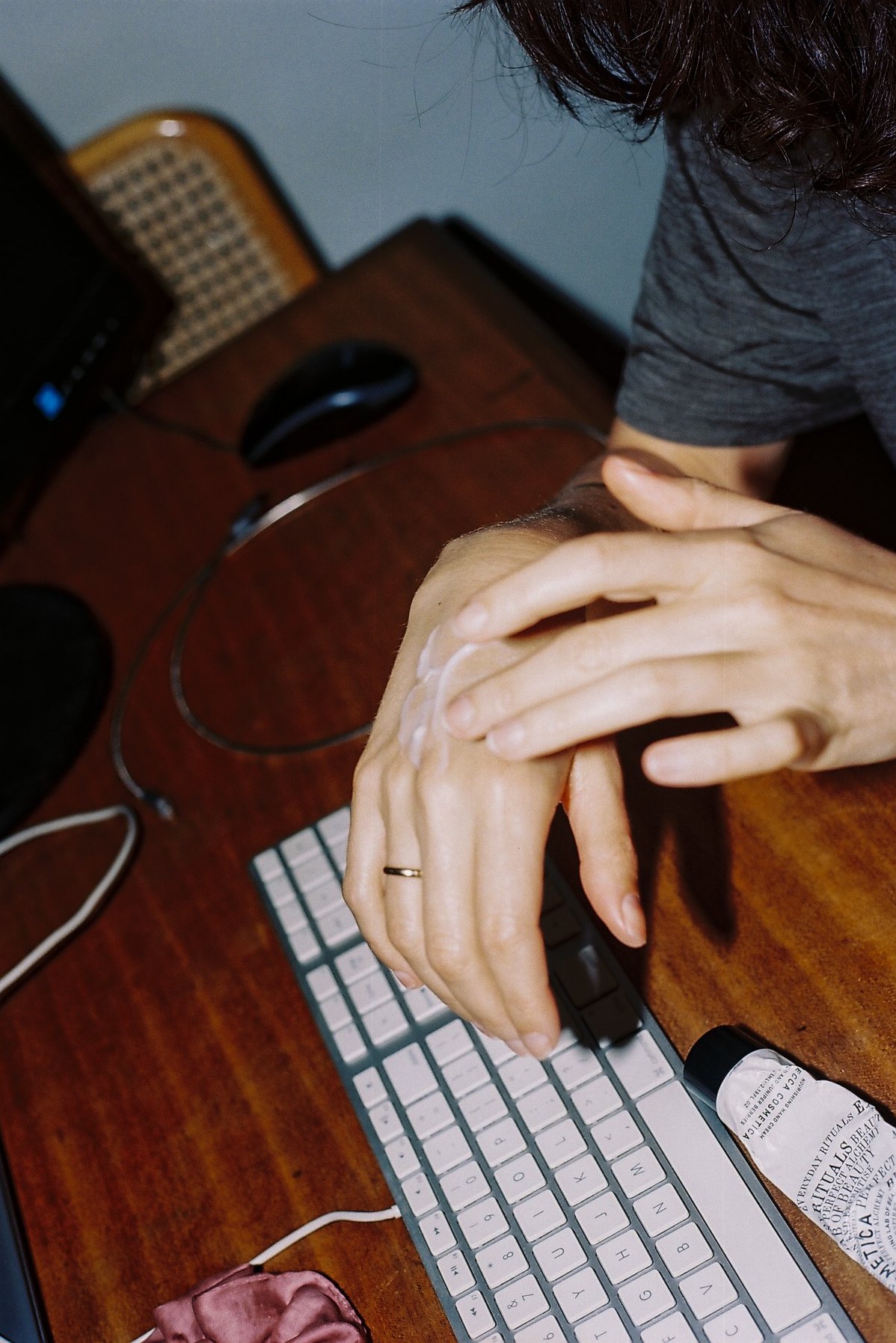I love hands. And I believe that any hand can be pleasing and photogenic. You don’t have to have super long fingers or a perfect nail bed. You just have to take care of what you have. As I got older, I realised that hands, cuticles and feet are only in good form if you continually put the effort in. Proper hand and cuticle care can be as basic as maintenance routines get. And I’m not going to cover nails here. I rarely wear nail polish now, and I love that Bare Hands made understated nails a vibe. But I have always done at-home manicures and, in the process, discovered the minimum required to ensure my hands and the cuticle remain hydrated and healthy. Here’s how to get your hands back to beautiful.
How do I keep my hands nice?
Possibly the most overlooked skincare task is hydration. Frequent hand-washing and the use of sanitiser will strip the hand of moisture. And never wash your hands with hot water. Higher temperatures only exasperate the issue. Cracked, dry hands also become common due to increased water immersion in the summer months, so get yourself a nice hand cream and use it. I love Aesop and use their Geranium Leaf Body Balm, Amandine has the Resurrection Aromatique Hand Balm. But because I am obsessed with body oils, much of the time, that is what I use.
One of my favourite hand creams to use isn't a cream. It's the 8 Faces Boundless Solid Oil, which I also use on my face. It’s deeply hydrating. The hero ingredient is Amla Berry, a super-fruit rich in Vitamin C that promises to boost collagen, fight free radicals and bring a fresh glow to your skin. I think it works. Malin+Goetz Meadowfoam Oil Balm and Goe Oil are both multi-balms that I will purchase at some point when I have used all my others to completion.
I’m still going through a tube of Mecca Cosmetica Nourishing Hand Cream. It contains hyaluronic acid that locks in moisture, creating firmer, hydrated skin, yet isn’t sticky—I can just put it on and continue whatever I’m doing, and it makes my hands feel so maintained. It is also cruelty-free, made without animal products, parabens and sulphates. Other favourites include Aesop Resurrection Aromatique Hand Balm and Grown Alchemist Intensive Hand Cream. And the Le Labo Body Cream (Hinoki). I mean, if you're buying it for another part of your body, may as well use it on your hands, too, right? I did receive a sample of their Hand Pomade, which I loved, but again, using what I have, so there’s a purchase for 2024.

Cuticle care!
Your cuticles are there for a reason. Cuticles are a thin layer of clear dead skin located at the nail bed—an important and delicate part of your nail structure, where cells that comprise your nail plate are produced, modified and keratinised to become the hard, flat cells of your nail. As the nail grows, it rips the underside of the skin at the base of your nail, called the eponychium. Between the eponychium and the nail plate is where the cuticle forms, protecting the nail plate from bacteria and infection.
If a cuticle is compromised, there are implications for your nail health. If a cuticle becomes damaged from being overly dry or from cutting or aggressive manicuring, water and yeast can enter the nail, causing a paronychia infection. This is why I am a cuticle pusher. Each night, I do this, massaging into each cuticle whichever facial or body oil I have near. Currently, AYU Rose Otto, Fig & Black Pepper Body Oil is my favourite.

A word on sunscreen application
It is your hands which start to show the first signs of ageing, so if you know that you will be spending time in the sun for vanity’s sake, apply a broad-spectrum sunscreen to your hands. Age spots appear when melanin becomes clumped in the skin or is produced in high concentrations. This hyperpigmentation is caused by over activity of melanocytes—the pigment-producing cells in the skin.
Anyone can develop age spots, though, with increased exposure, there is a higher incidence of such examples of environmental ageing. Those with fair skin or a history of intense sun exposure or sunburn will develop hyperpigmentation much earlier. Such star damage can lead to squamous cell carcinoma or skin cancer. Correcting for past sun damage is difficult, if not impossible. UV light is the most common cause of hyperpigmentation, and therefore, UV protection and avoiding excess sun exposure are imperative to any anti-pigment regime. View our reef-safe sunscreen guide.

Everything we create is an effort to participate in a culture shift. All products featured are independently selected and curated by the authors, and we only feature items we use or would use ourselves that align with our values. As part of our business model, we do work with affiliates such as Amazon. As an Amazon Associate, we earn from qualifying purchases if you decide to purchase through our links. The price would be the same to you either way, but if you find value in our work, then these affiliate links are a way to support it. We only recommend brands, makers and products we use — that we support. Transparency is important to us, so if you have any questions, please reach out to us.



